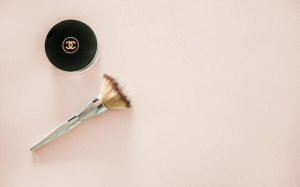Victoria’s Secret and Aerie have become the two main competitors in the ever-changing fashion industry of lingerie. The “Victoria’s Secret vs. Aerie Case Study” highlights how these brands have taken vastly different approaches to marketing and customer engagement.
As you delve into this case study, you’ll discover how Aerie’s rise is attributed to its focus on body positivity and inclusivity, while Victoria’s Secret struggles with changing consumer expectations.
We’ll also explore how competitors are disrupting industry dynamics by targeting younger demographics and offering size-inclusive products.
The “Victoria’s Secret vs. Aerie Case Study” sheds light on Victoria’s Secret recovery efforts amidst declining sales, as well as the role inclusive marketing strategies play in shaping future growth projections for both brands.
Finally, we’ll discuss how American Eagle Outfitters bolsters Aerie’s success through corporate citizenship initiatives and examine the fierce competition posed by inclusive brands like Savage X Fenty against Victoria’s Secret traditional beauty standards.
This insightful analysis will provide an in-depth understanding of each brand’s strengths, weaknesses, opportunities for growth, and their impact on today’s intimate apparel landscape.
Table of Contents:
- Aerie’s Rise Through Body Positivity and Inclusivity
- Victoria’s Secret Struggles with Changing Consumer Expectations
- Competitors Disrupting Industry Dynamics
- Victoria’s Secret Recovery Efforts Amidst Declining Sales
- Market Projections & Factors Influencing Growth
- Aerie’s Success Bolstered by American Eagle Outfitters (AEO)
- Victoria’s Secret vs Inclusive Brands like Savage X Fenty
- FAQs in Relation to Victoria’s Secret Vs. Aerie Case Study
- Conclusion
Aerie’s Rise Through Body Positivity and Inclusivity
Let’s talk about Aerie, a game-changer in the lingerie industry. Since launching bralettes back in 2016-2017, they’ve experienced significant growth by focusing on community, body positivity, and authenticity.
Their secret sauce? Viral online campaigns featuring diverse models that resonate with consumers seeking representation and inclusivity. Aerie ditched airbrushing and embraced real women of all shapes and sizes for their #AerieREAL campaign. This bold move has earned them praise from customers who appreciate seeing themselves represented in ads.
Social media played a huge role in amplifying Aerie’s message. Their #AerieREAL hashtag took off like wildfire across platforms such as Instagram, Twitter, and Facebook. The lingerie sector is highly competitive, with Victoria’s Secret being the most renowned label in the space. However, Aerie’s focus on inclusivity and authenticity has allowed them to carve out a unique space in the market.
Victoria’s Secret Struggles with Changing Consumer Expectations
Let’s face it, folks. Victoria’s Secret has been facing serious backlash for not keeping up with the times and embracing inclusivity and body positivity in their marketing campaigns. Remember those ultra-slim models marketed as sexy goddesses? Critics argue that these outdated beauty standards are alienating customers who crave representation and diversity.
Criticisms Surrounding Outdated Beauty Standards
The brand has faced a decline in operating income due to its inability or unwillingness to evolve with changing cultural values. In fact, Victoria’s Secret lost more than half of its market share between 2015 and 2023.
Loss of Market Share Due to Shifting Cultural Values
You might be wondering: what caused this massive shift?
- Demand for Inclusivity: Consumers want brands that celebrate all shapes, sizes, and colors – something Victoria’s Secret was slow to adopt.
- Rise of Body Positivity Movement: The movement encourages people to embrace their bodies regardless of societal norms – which is contrary to the traditional image portrayed by Victoria’s Secret Angels.
- New Competitors: Brands like Aerie and ThirdLove have entered the market with inclusive sizing options, resonating with younger audiences who prioritize diversity and representation.
The writing’s on the wall: Victoria’s Secret needs to adapt or risk becoming irrelevant in today’s intimate apparel market.
Eager for more insights into the world of fashion? Dive into our blog for all things fashion industry-related.
Competitors Disrupting Industry Dynamics
Let’s discuss the recent entrants into the market.
Brands like ThirdLove and Parade are shaking up the lingerie market with their fresh approach to inclusivity and diversity.
You might be wondering, how exactly?
Focus on Size-Inclusive Product Offerings
Gone are the days of limited sizing options. Newer labels comprehend that shoppers exist in all sizes, so they’re providing an extensive selection of items to accommodate multiple body types. This is not only empowering for customers but also a smart business strategy as it attracts a broader audience base.
Targeting Younger Demographics
The younger generation values representation more than ever before. In response, these disruptive brands have tailored their marketing campaigns to resonate with this demographic by promoting authenticity and self-expression through diverse models representing different backgrounds, body types, and abilities.
Curious about how other brands are shaking up the fashion industry? Check out this insightful article.
Victoria’s Secret Recovery Efforts Amidst Declining Sales
Victoria’s Secret has recently been facing difficulties in maintaining its foothold within the lingerie industry, a challenge that must be addressed.
In an attempt to turn things around, the Victoria’s Secret brand launched a new campaign called ‘Undefinable’, aiming to shatter stereotypes associated with angels’ appearances.
But wait, there’s more.
The brand also started becoming more size-inclusive within stores and repositioned its assortment mix away from push-up bras and padded styles into intimate sleepwear categories.
However, despite these efforts, revenue loss totaled $6 billion during 2023 alone when they closed down 59 locations. Ouch.
So what went wrong?
- Rising prices amidst competition: As part of its recovery efforts since 2023, Victoria’s Secret increased prices significantly but faced stiff competition from inclusive brands like Savage X Fenty that celebrate diversity through marketing campaigns and product offerings.
- Savage X Fenty challenging traditional beauty standards: During Q1 alone, Victoria’s Secret experienced a decline of 46% in overall sales, including online sales decreasing by 15%.
Moving forward is crucial for Victoria’s Secret as it tries to regain market share while adapting to changing consumer preferences regarding diversity and representation.
But will these efforts be enough to win back customers and compete with inclusive brands like Savage X Fenty?
Only time will tell.
Market Projections & Factors Influencing Growth
Let’s talk numbers, shall we?
In 2023, the US lingerie market experienced a decrease of 3.6% ($366 million) in revenue. Economic factors and general merchandise retailers creating their own products played a significant role in this decline.
But fear not, fashion enthusiasts. The outlook for the industry is not completely bleak.
- Trend #1: Projections indicate slight growth over the next few years with brands promoting social responsibility, individuality, inclusion, and body positivity expected to perform better.
- Trend #2: Decreased revenues in recent years have led to an increased focus on inclusive marketing strategies that resonate with today’s consumers who value diversity and representation.
This means embracing these trends wholeheartedly.
The Role of Inclusive Marketing Strategies
No more cookie-cutter campaigns.
Inclusive marketing strategies are taking center stage as brands like Aerie Real Life, CUUP, and Savage X Fenty celebrate the beauty of diversity.
Their campaigns embrace a wide range of people, promoting self-love and acceptance in an inspiring way.
And guess what? This approach is resonating with consumers who are tired of unrealistic beauty standards.
Inclusive marketing strategies not only empower individuals but also drive growth for brands willing to adapt to changing consumer preferences.
Aerie’s Success Bolstered by American Eagle Outfitters (AEO)
One of the key factors behind their success is their parent company, American Eagle Outfitters (AEO).
AEO takes corporate citizenship seriously and aims to double Aerie’s revenue in just two years.
This commitment, combined with a resonating marketing strategy, has positioned Aerie as a strong contender within the lingerie market.
Corporate Citizenship Driving Success
AEO believes in promoting social responsibility through its brands, including Aerie.
Their focus on body positivity and inclusivity resonates with today’s consumers who value representation and authenticity.
Forbes reports that this approach helped boost sales for both online and brick-and-mortar stores alike.
The Importance of Target Demographics
A crucial aspect of Aerie’s success lies in understanding its audience – young consumers aged 15-25 seeking inclusive products and messaging.
- Focusing on this demographic allowed them to tap into an underserved market segment craving change from traditional beauty standards set by Victoria’s Secret Angels campaigns.
This highlights how Aerie’s #AerieREAL campaign features diverse models, empowering young women to embrace their bodies as they are.
This strategy has not only earned the brand a loyal following but also driven impressive growth in sales and market share.
So there you have it – AEO’s commitment to corporate citizenship and understanding its target demographic has propelled Aerie towards success in the competitive intimate apparel industry.
Victoria’s Secret vs Inclusive Brands like Savage X Fenty
Let’s talk about the lingerie showdown of the century.
As part of its recovery efforts since 2023, Victoria’s Secret increased prices significantly but faced stiff competition from inclusive brands like Savage X Fenty. This brand celebrates diversity through marketing campaigns and product offerings.
- In Q1 alone, Victoria’s Secret experienced a decline of 46% in overall sales.
- Even their online sales decreased by 15% during this period.
Fierce.
Rising Prices Amidst Competition
Raising prices can be risky when you’re already struggling to keep up with changing consumer preferences. In fact, it might even drive customers away – especially if they find better value elsewhere (hello, Savage X Fenty.).
Savage X Fenty Challenging Traditional Beauty Standards
Moving on to our challenger: Rihanna’s brainchild is all about inclusivity and body positivity for everyone. The brand features models from diverse backgrounds and sizes that challenge traditional beauty standards.
Will these contrasting strategies continue shaping the future landscape of the lingerie market? Only time will tell. Stay tuned, fashionistas.
FAQs in Relation to Victoria’s Secret Vs. Aerie Case Study
Is Victoria’s Secret or Aerie Better?
It depends on personal preferences and values. Aerie is known for its body positivity, inclusivity, and authentic marketing campaigns, while Victoria’s Secret offers a more traditional approach to lingerie with an emphasis on glamour. Both brands have their unique selling points; it ultimately comes down to what resonates most with the individual consumer.
Who is the Biggest Competitor to Victoria’s Secret?
The biggest competitors to Victoria’s Secret include inclusive brands like Savage X Fenty, Aerie by American Eagle Outfitters, and other emerging companies that focus on size-inclusive offerings, diverse representation in marketing campaigns, and sustainable practices.
What are the Issues with Victoria’s Secret?
Victoria’s Secret has faced criticism for outdated beauty standards, lack of diversity in models, and resistance towards embracing body positivity. This has led to declining sales as consumers increasingly prioritize inclusivity when choosing fashion brands. Additionally, some customers perceive their products as overpriced compared to competitors offering similar quality items at lower prices.
What Makes Victoria’s Secret Different?
Victoria’s Secret stands out due to its long-standing reputation as a leading lingerie brand associated with glamour and luxury. Their annual fashion shows were iconic events featuring top models called “Angels.” However, this image has been challenged recently by more inclusive competitors who emphasize authenticity in their marketing strategies.
Conclusion
Overall, the Victoria’s Secret vs. Aerie case study highlights the importance of adapting to changing consumer expectations and values in the fashion industry. While Victoria’s Secret has struggled with criticisms surrounding outdated beauty standards and declining market share, Aerie has risen through its emphasis on body positivity and inclusivity in marketing campaigns.
Competitors like Savage X Fenty have also disrupted industry dynamics by targeting younger demographics and offering size-inclusive product offerings. However, both brands continue to face challenges as they navigate recovery efforts amidst shifting cultural values. In the end, this situation provides a crucial teaching for fashion labels aiming to maintain their relevance in an ever-evolving market.







